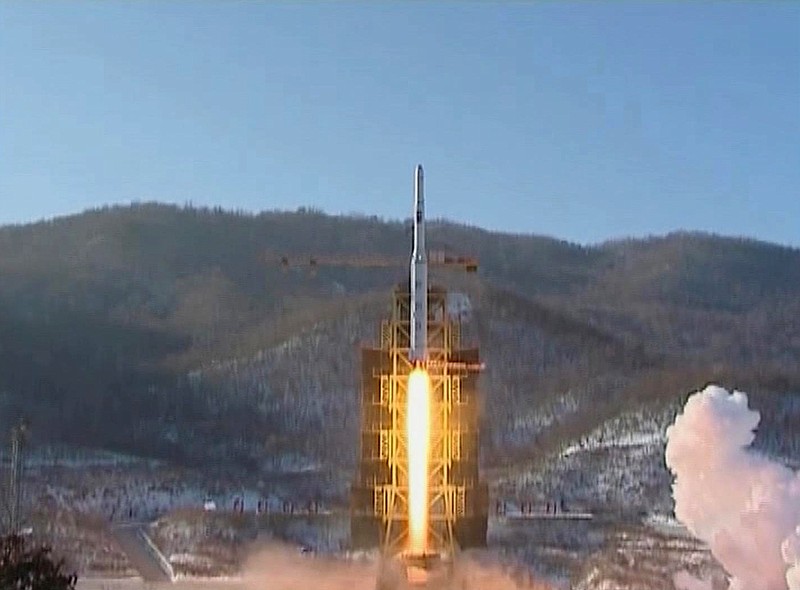SEOUL, South Korea (AP) - After 14 years of painstaking labor, North Korea finally has a rocket that can put a satellite in orbit. But that doesn't mean the reclusive country is close to having an intercontinental ballistic missile.
Experts say Pyongyang is years from even having a shot at developing reliable missiles that could bombard the American mainland and other distant targets, though it did gain attention and the outrage of world leaders Wednesday with its first successful launch of a three-stage, long-range rocket.
A missile program is built on decades of systematic, intricate testing, something extremely difficult for economically struggling Pyongyang, which faces guaranteed sanctions and world disapproval each time it stages an expensive launch. North Korea will need larger and more dependable missiles, and more advanced nuclear weapons, to threaten U.S. shores, though it already poses a threat to its neighbors.
"One success indicates progress, but not victory, and there is a huge gap between being able to make a system work once and having a system that is reliable enough to be militarily useful," said Brian Weeden, a former U.S. Air Force Space Command officer and a technical adviser to the Secure World Foundation, a think tank on space policy.
North Korea's satellite launch came only after repeated failures and hundreds of millions of dollars. It is an achievement for young authoritarian leader Kim Jong Un, whose late father and predecessor, Kim Jong Il, made development of missiles and nuclear weapons a priority despite international opposition and his nation's poverty.
Kim said the achievement "further consolidated" the country's status "as a space power," the government's official Korean Central News Agency reported Thursday. It added that Kim "stressed the need to continue to launch satellites in the future."
Kim visited the command center, gave the final written launch order and "keenly observed the whole processes of the launch" Wednesday, KCNA reported. It said the satellite entered into its orbit 9 minutes and 27 seconds after the launch, at 9:59 a.m.
South Korea's Defense Ministry said Thursday the satellite was orbiting normally at a speed of 7.6 kilometers (4.7 miles) per second, though it's not known what mission it is performing. North Korean space officials say the satellite would be used to study crops and weather patterns.
Though Pyongyang insists the project is peaceful, it also has conducted two nuclear tests and has defied international demands that it give up its nuclear weapons program.
A senior U.S. official said the satellite is tumbling in orbit and not acting as it should, but the official said that doesn't necessarily mean it is out of control. The official, who spoke on the condition of anonymity because of a lack of authorization to publicly discuss the U.S. analysis, said the important takeaway is that North Korea was able to successfully execute all three stages of the missile launch and get the satellite into space.

